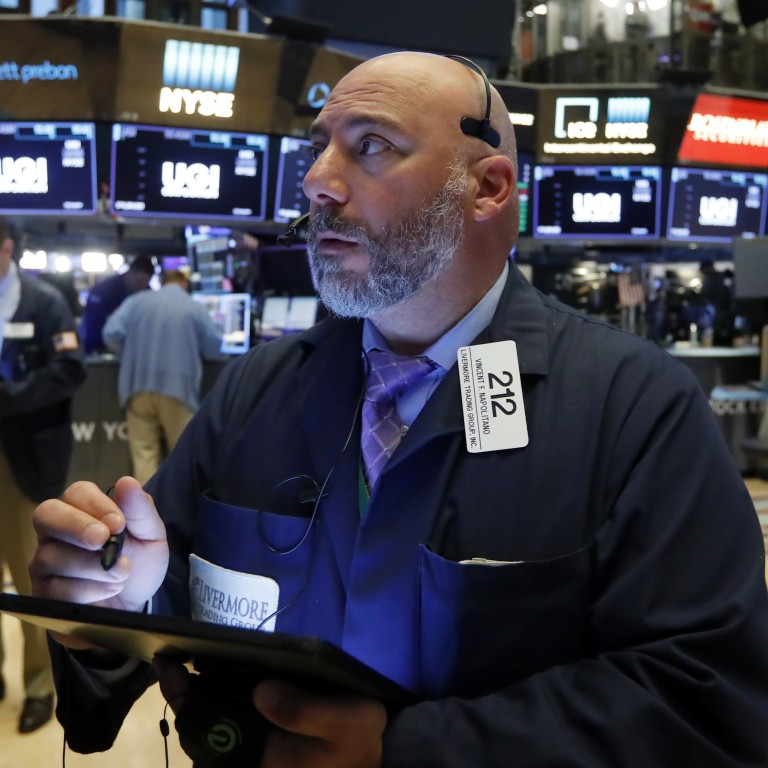
Trade war doubts and central bank loosening have done the unthinkable – brought down bond yields and driven up equities
- Normally falling bond yields are a sign of conditions that bring down equity markets. That’s not the case at the moment, but failure to resolve the trade dispute could end equities’ winning streak
2019 has seen relentless rallies in both bond and equity markets. Bond yields – or interest rates to you and me – fall as bond prices rise, and this usually reflects some combination of falling growth and inflation expectations. In contrast, equities generally like stronger growth. Therefore, bonds and equities usually move in opposite directions.
So how do we explain that US equity indices are at record highs – and global ones not far off – while US 10-year bond government bond yields are back down to around 2 per cent since late 2016? And bond yields in Europe are even lower, with much of the German and French government bond yield at record lows and in negative territory.
For bonds, the major driver of the rally has been the escalation in US-China trade tensions throughout the year which has created economic uncertainty and is already causing growth to slow. The risk is rising that a further escalation of the dispute could exacerbate the already-visible signs of corporate caution and ultimately lead to a slowdown or, if prolonged, a recession.
Markets’ near-term relief on trade may be overwhelmed by economic data showing that global growth momentum is slowing. Trade uncertainty is interacting most obviously in the industrial sector, where sluggish global capital expenditure growth has reduced global goods demand, leaving manufacturers with high levels of inventory.
The data flow has turned noticeably weaker since April, with manufacturing sentiment, in particular, now suggesting little or no growth. And there has been little sign of stabilisation in June’s data, with regions highly sensitive to the industrial cycle such as the Asian manufacturers Korea and South Taiwan actually showing further deterioration.
US-China trade war pushes world economy closer to the edge
The European Central Bank (ECB) has also been pulled into the easing camp, as growth in Europe has consistently disappointed, also stemming from the weakness in global trade. This has caused the ECB to reluctantly acknowledge that the slowdown is not transient and to be fairly explicit about the need for further policy easing, although the question is how much more ammunition it really has.
Policy stances of central banks in Asia have also turned more accommodative. As most Asian economies are highly leveraged to the global trade cycle, growth risks from the trade dispute are a major concern across the region, while local inflationary pressures remain subdued and should not act as a constraint on policy easing. In the past two months, three Asian central banks, those of Malaysia, the Philippines and India, have already lowered their policy rates, and expectations are rising that the Bank of Japan may also need to ease further.
Why the world needs another round of interest rate cuts
So how does all of this fit together with strong equity markets? The truth is that equity markets do like central bank policy easing, and can often ignore deteriorating economic fundamentals for a while as policy is being eased. This is both because lower interest rates make equities look more valuable in comparison, and because of the hope that policy easing will eventually revive economic growth.
However, experience shows that this can only go on for so long – unless growth finally does recover, equity investors eventually lose hope. So unless we see a concrete and believable resolution to the trade dispute reviving global growth in the next few months, equity markets look vulnerable even as interest rates fall.
Patrik Schowitz is a global multi-asset strategist at JP Morgan Asset Management

